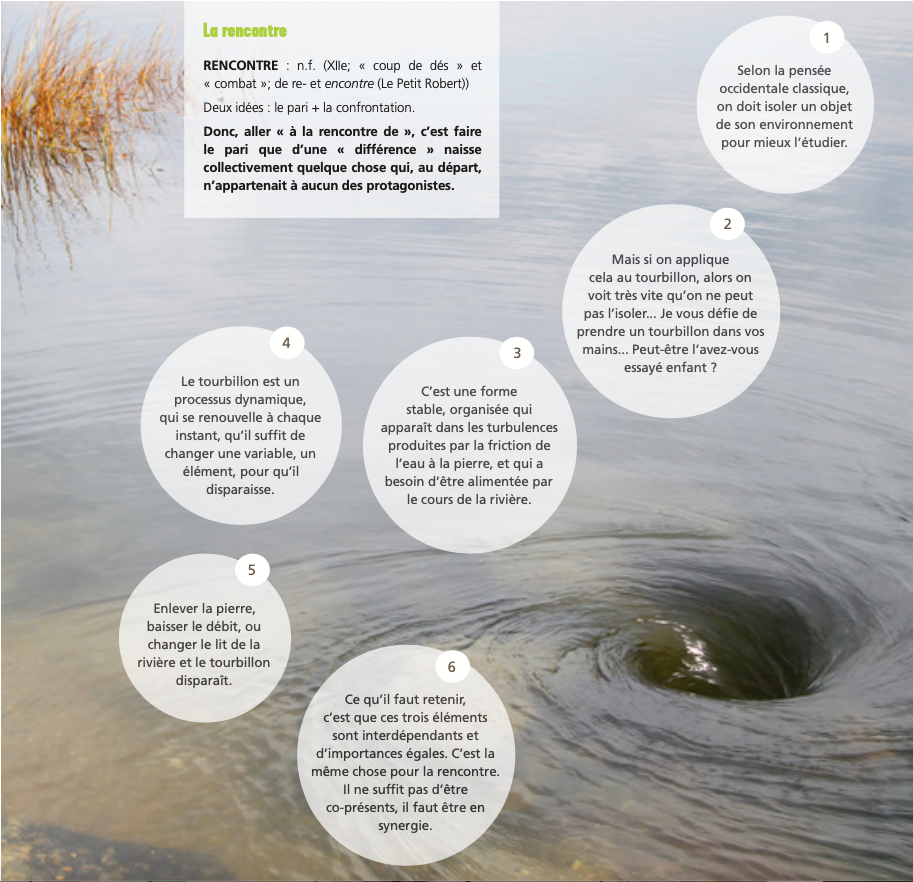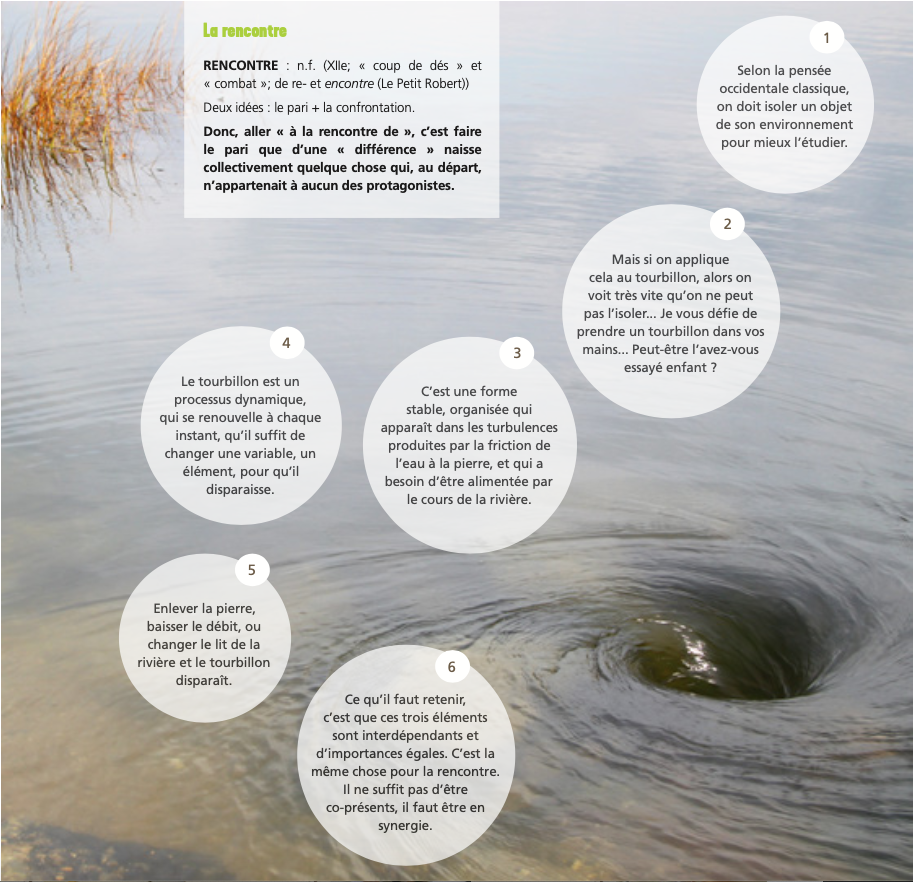How can you put this worldview into action in your professional context?
A relational approach based on collaboration and partnership is proposed. Creating a context and a safe space conducive to a genuine encounter will allow you to generate new ways of doing things, while bringing closer and harmonizing diverse ideological and cultural perspectives.
You will see that the foundation lies in establishing a relational ecosystem for "doing-together."
The relational ecosystem is both an approach and a philosophy. However, it can become a project methodology to the extent that it is based on a good understanding of the context, consideration of different knowledge and experiences, and respect for the values of First Peoples.
"Doing-together" begins with establishing relationships. Building relationships requires time and mutual trust. It happens step by step. Remember that the quality of the relationship is the cornerstone of the project. This philosophy of "doing-together" allows approaching the project with a more relational and collaborative orientation rather than performative (results-oriented).
In the relational ecosystem, cooperation based on a close and lasting partnership is privileged. It suggests that the benefits and fruits of the project are mutual.
To do this, three anchors are important:
- Interaction: exchange, mutual aid, reciprocity, etc.
- Maintaining the relationship: mutual support, sharing, taking time, continuity, etc.
- Emotional content: commitment, trust, reliability, long-term sustainability, etc.
"Doing-together" can take the form of:
Strategic partnerships: developing agreements, meetings between partners, association, etc.
Strategic alliances: sharing common goals, resources, skills, etc.
Networks: networking potential collaborators, interconnectivity between organizations, communities, nations (knowledge-sharing), etc.
An Era of Healing
The tragic episodes of residential schools have left their mark on Indigenous communities; schools are still widely seen as instruments of assimilation into white culture. While education remains a priority even for the most remote Indigenous communities, it is evident that they face a conflict of values that complicates pursuing higher education curricula, for example. Caught between their community traditions and the values of a Western world that may not necessarily suit them, Indigenous youth encounter considerable challenges that persist into adulthood across various similar systems.
Hence, an essential approach involves addressing the concept of cultural safety—a long and complex process aimed at reducing discriminatory practices and illegitimate relationships within healthcare, education systems, and larger institutions.















